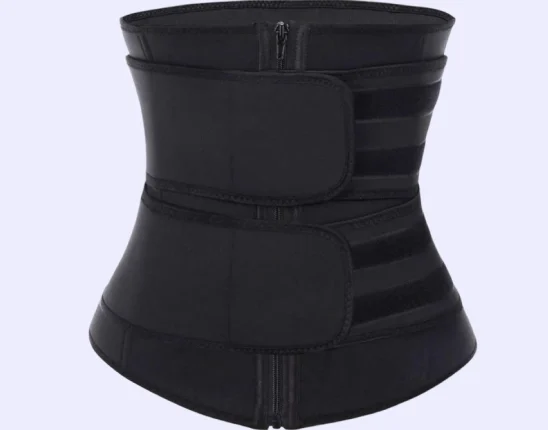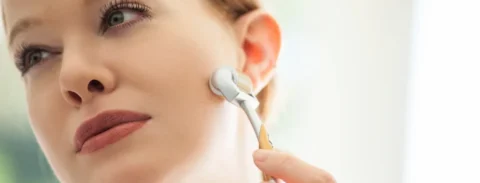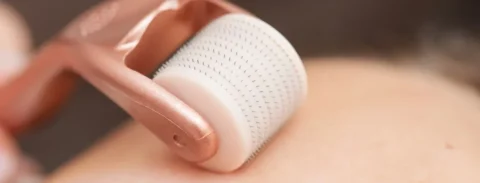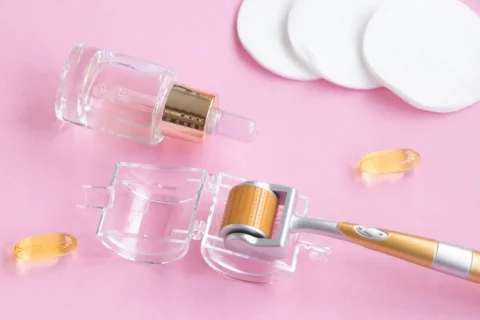Surgery is a major medical procedure that can take months to recover from. Aside from the effort of healing from a procedure, another concern that many patients may have is the scarring that remains after their surgery. While some people may not mind the appearance of surgical scars on their skin, some look to reduce their appearance or remove them entirely – usually through microneedling sessions or by using derma rollers at home.
But how soon can you use a derma roller on a surgical scar? Most experts recommend that they wait for a few months (usually around 3 to 5) after their surgery to ensure that the scar formation is final and the skin around it has fully healed. However, simply waiting for the scar to heal isn’t enough – taking into account the kind of scar that develops is important as well.
Why People Need to Be Careful With Derma Rolling Scars
Derma rolling and microneedling procedures have always been a viable method for treating skin conditions like acne scarring and stretch marks, so it’s no surprise that most people have also started using them to manage conditions and marks left behind from surgical scarring. However, because of the way that dermal rollers work, there’s only a specific type of scar that responds well to this type of treatment.
Specifically, microneedling and derma rollers work well on depressed scars, or scars that form below the surface areas of the skin. This is because scars form when there’s an excess of collagen in the area, which can lead to raised scars that visibly bulge from the upper layers of the skin. Given that microneedling treatments work by increasing the collagen production in the treated area, applying a derma roller to a raised scar will only increase the risk of scarring.
Because the microneedling process opens channels on the surface of the skin, healthcare providers will generally advise against using derma rollers on a surgical scar soon after the procedure. Even if the scar tissue has already healed, the skin may be too sensitive to take direct microneedling treatments without significant pain or risk of infection.
However, it’s possible to still use derma rollers around the area of a scar to make sure that enough collagen fibers form to match the texture or tone of the scar. Admittedly, this can be difficult with most dermal rollers since they don’t have the needle length or needle depth required to avoid aggravating the skin around the scar, so a patient may have to get their treatments done in a clinic with a device like a microneedling pen.
One concern that most providers will have when treating a scar from open-heart surgery is the risk of infection. While the microneedling treatment (or using a dermal roller) doesn’t puncture the blood vessels below the scar, it still creates plenty of micro-tears and injuries around the treated area that can be infected. If the scar hasn’t fully healed, these infections can quickly turn serious and potentially life-threatening.
However, if all precautions are taken care of and the healthcare provider of the patient signs off on using derma roller treatments or microneedling, it’s possible to see visible improvements with the removal or reduction of scar tissue a few months after the treatments start. Most patients who undergo these procedures report favorable results after a year, with additional scar care products helping to improve these results.
Are There Alternatives for Removing a Scar From a Surgical Procedure?
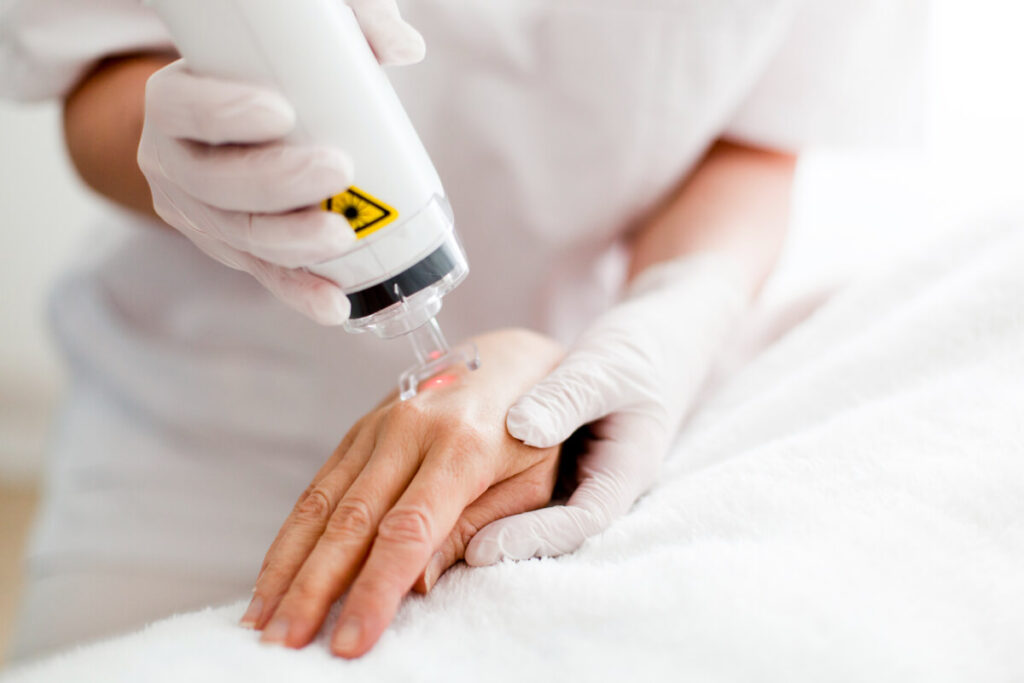
Even if the scar is given enough time to fully heal after a surgical procedure, sometimes the skin is still too delicate or sensitive for derma rolling. In the case of a scar from open-heart surgery, sometimes the healing process creates a scar that doesn’t respond favorably to derma roller treatments. In this case, the patient can choose other procedures that can help minimize the appearance of surgical scars, like:
1. Laser Treatment
Laser treatment is by far one of the most effective ways to reduce the appearance of scars without being an invasive procedure. By using a different combination of lasers, it’s possible to shrink, remove, alter the color, or make a scar blend in better with the rest of the skin without having to worry about damaging the surrounding tissue. There are different types of laser scar removals that a patient can consider, which can work on a variety of scarring from hypertrophic scars to keloid scars.
Most studies also support the efficacy of skin resurfacing treatments as a way to remove scarring from surgical procedures. However, patients must be careful to make sure that their laser treatments match their skin tone, skin color, and skin type in the treated area for the best results. Recovery time after laser scar removal treatments are minimal, and only the top layer of skin is usually affected.
2. Chemical Peels
Chemical peels are another option that many people consider depending on the type of scar they want to be removed; typically, peels work best with surface-level scars as they require multiple applications to work. They can be applied a few months after surgery when the skin has had a chance to repair itself, so they work with heart surgery scars that have been given topical treatments and time to heal.
Keep in mind that only light peels are suitable for heart surgery scars since any stronger solutions will burn right through the excess scar tissue and may cause the skin to experience adverse effects. A depressed discolored scar won’t respond well to chemical peels as well, since they’re usually not within the surface layer of the skin.
3. Dermabrasion
If the scar is visibly raised from the surface of the skin, dermabrasion can be considered to remove the excess layers of skin that have formed around it. They work particularly well on larger scars that go past the top layer of the skin, though the proper technique is required to make sure that the skin doesn’t experience any infection from having the upper layers removed.
Dermabrasion best suits people with light-colored skin since people with darker skin tones can end up with uneven pigmentation or even more scarring. In many situations, dermabrasion can be combined with resurfacing procedures to help even keloid scars, though sufficient time needs to pass between the two procedures to avoid any adverse effects.
4. Scar Reduction Surgery
While most healthcare providers won’t recommend surgery to remove scars so soon after the surgery that caused them, it’s possible to look into scar reduction surgery or scar removal a year or two after the open-heart surgery has finished. This is because the amount of skin that needs to be removed may be too much for the skin to take soon after the surgery, and also because older scars are easier to operate on.
Scar revision surgery has outstanding results for many patients, with almost complete removal of the scar in many cases. For scarring from open-heart surgery, the visible results after the procedure can show up as early as a week after it’s been done. Many patients who opt for this procedure usually have favorable results with minimal side effects, though it’s always done after their healthcare provider has signed off on the procedure.
Aside from these treatments, most methods for the removal of scars like dermal fillers, skin graft procedures, and cosmetic surgery work well. Because the scars from open-heart surgery are often in a sensitive area, most cosmetic providers and patients would rather err on the side of caution and recommend a less intensive method for removing or reducing the scar.
Buy High-Quality Medical Tools, Products, and Supplies From FACE Med Store
Derma rollers are excellent treatments for reducing or getting rid of scarring, even the ones from a surgical procedure. As long as the patient waits until the scar is fully healed, then they can use a dermal roller or other microneedling treatments to improve the appearance of the skin around the scar or retexture it so it matches its surroundings. However, scarring comes in different types, so derma rollers won’t always work for specific types of scars. For the ones acquired from open-heart surgery, it’s best to only use them on flat scars and avoid raised, hypertrophic, or keloid scars to prevent infection.
FACE Med Store has been a reliable supplier of medical tools and supplies to cosmetic practices across the country for years. Having recently made our stock accessible to single clients, we’ve kept up our goals of providing high-quality medical tools and supplies at competitive prices. By allowing our customers access to quality products without worrying about the cost, we’ve become a steadfast partner for many businesses and individuals who want to experience the best of what cosmetics and medical procedures can offer.
To know more about our products and what we currently have in stock, contact us today.

